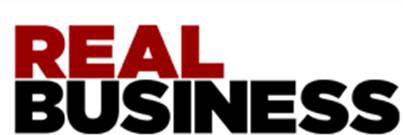#mc_embed_signup{background:#fff; clear:left; font:14px Helvetica,Arial,sans-serif; }
/* Add your own Mailchimp form style overrides in your site stylesheet or in this style block.
We recommend moving this block and the preceding CSS link to the HEAD of your HTML file. */
It is customers who really create a business. Ideas and plans do not. Not even setting up an office with all needed facilities creates a real business. Only when you have your first paying customers can you say that you have a business.
Getting those first customers is typically one of the toughest tasks for most businesses. In today’s markets, there are established suppliers for practically everything and you will typically be just one of the many suppliers. Why should a customer buy from an unknown supplier with unknown capabilities?
Even if you are offering a completely new product or service with no competition, people tend to play safe and are hesitant to risk their money on something unproven.

By getting and satisfying your first few customers, you demonstrate that you do have a real business that is delivering real value to real people. How do you get these first few customers?
Identify Your Ideal Prospects
Finding the ideal prospects is a multi-step process.
First, identify the persons who will be interested in buying what you sell. Next, select those who are most likely to buy from you; not all those who buy might be inclined to buy from you. This select group will be your ideal prospects.
How do you select those who are most likely to buy from you?
For a new business, these would be persons whom you already know, or whom you can contact through persons you already know. These persons (or the referrers) should also be inclined favourably towards you (i.e. don’t select your enemies to approach for orders or as referrers).
Create a list of people you know that is as exhaustive as possible: friends, classmates, school or college mates, your professors or students, office colleagues, persons you have become acquainted with in the course of your employment, professionals like doctors, lawyers and accountants whose services you have used and all the other people with whom you have had dealings with. Not all (or even a few of) these people will be prospective customers for what you sell; however, they might know someone who might be.
Once you have the big list, start contacting them (in the right way, depending on how things stand between you and each person). Explain what you offer and how it benefits its buyers. Ask those who might be prospective customers to give you their business. Ask others for references to prospective customers.
While some of the people you contact thus might help because they want to help you, others might be motivated if you can offer some incentive. Do it in appropriate manner.
Related: 8 Business Boosting Marketing Ideas You Haven’t Tried
Using Incentives
Incentives can take different forms. For some, a straight finding fee might be okay.
Others might already be selling a non-competing product or service to those who are your prospective customers. Explore the possibility of reaching these prospects through these businesses. For example, you can offer your product or service at an attractive rate to customers of these businesses. Such a promotion might bring business not only for you but also more business for the original business.
If you do it right taking the trouble to create a big list and then contacting (and following up) each person in the list in ways that are appropriate, you are most likely to get those first few customers. By trying to satisfy them, you can also make your offer more appealing to more prospective customers.
Learn to Satisfy Your Customers
These first customers are not just customers. They are invaluable resources to fine-tune your offer. Observe their responses, ask for feedback (particularly on any dissatisfactions that they have) and analyze these.
The analysis will produce insights you cannot get otherwise. You will get a clear idea of what your customers are trying to do using your product or service, and how they are doing it. The analysis will show you the problems your customers are encountering in the process.
With these insights you can take different kinds of remedial actions to solve the customer problems. These can include:
- Modifying the product or service to make it easier for customers to use it the way they want to do
- Adding value in such forms as developing a user manual that explains clearly how to use the product or service to achieve specific results
- Providing support to help customers achieve desired results in ways that are effective yet do not cost much
Once you have an offer package that help your customers achieve just what they want from using your product or service, you will have something that is just right for the market. You will then be able to focus on advertising and publicity to bring it to the attention a wider group of prospects.
Your business start up will now be ready for bigger things!
3 comments
Comments are closed.
Add Comment